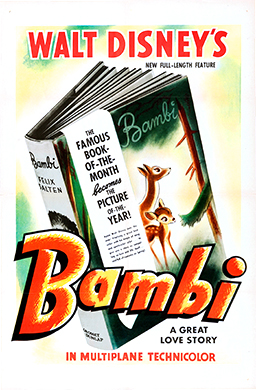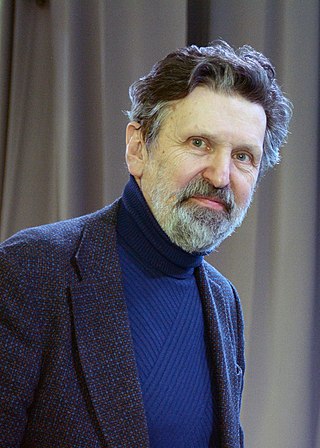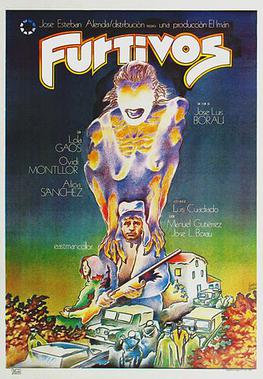
Dreams is a 1990 magical realist anthology film of eight vignettes written and directed by Akira Kurosawa, starring Akira Terao, Martin Scorsese, Chishū Ryū, Mieko Harada and Mitsuko Baisho. It was inspired by actual recurring dreams that Kurosawa said he had repeatedly. It was his first film in 45 years in which he was the sole author of the screenplay. An international co-production of Japan and the United States, Dreams was made five years after Ran, with assistance from George Lucas and Steven Spielberg, and funded by Warner Bros. The film was screened out of competition at the 1990 Cannes Film Festival, and has consistently received positive reviews.

The World of David the Gnome, originally titled David, el Gnomo and also known as David, the Gnome, is a Spanish animated television series based on The Secret Book of Gnomes, a series of children's books by Dutch author Wil Huygen and illustrator Rien Poortvliet. The series was originally created by Spanish studio BRB Internacional in collaboration with Televisión Española. Twenty-six episodes were produced. The series spawned two spin-off series: Wisdom of the Gnomes (1987) and The New World of the Gnomes (1996); and three films edited from the series: The Gnomes' Great Adventure (1987), The Gnomes in the Snow (1999), and The Fantastic Adventures of the Gnomes (2000).

Great Sand Dunes National Park and Preserve is a national park of the United States that conserves an area of large sand dunes on the eastern edge of the San Luis Valley, and an adjacent national preserve in the Sangre de Cristo Range, in south-central Colorado. The park was originally designated Great Sand Dunes National Monument on March 17, 1932, by President Herbert Hoover. The original boundaries protected an area of 35,528 acres. A boundary change and redesignation as a national park and preserve was authorized on November 22, 2000, and then established on September 24, 2004. The park encompasses 107,342 acres while the preserve protects an additional 41,686 acres for a total of 149,028 acres. The recreational visitor total was 527,546 in 2019.

Bambi is a 1942 American animated drama film produced by Walt Disney Productions and released by RKO Radio Pictures. Loosely based on Felix Salten's 1923 novel Bambi, a Life in the Woods, the production was supervised by David D. Hand, and was directed by a team of sequence directors, including James Algar, Bill Roberts, Norman Wright, Sam Armstrong, Paul Satterfield, and Graham Heid.

Aleksandr Konstantinovich Petrov is a Russian animator and animation director.

A Short Film About Love is a 1988 Polish romantic drama film directed by Krzysztof Kieślowski, starring Grażyna Szapołowska and Olaf Lubaszenko. Written by Kieślowski and Krzysztof Piesiewicz, the film is about a young post office worker deeply in love with a promiscuous older woman who lives in an adjacent apartment building. The film is set in Warsaw, the Polish capital.

Dragon Ball Z: The Tree of Might is a 1990 Japanese anime science fantasy martial arts film and the third Dragon Ball Z feature film. It was originally released in Japan on July 7 between episodes 54 and 55 of DBZ, at the "Toei Anime Fair" film festival, where it was shown as part of an Akira Toriyama-themed triple feature titled Toriyama Akira: The World. It was preceded by Dragon Ball Z: The World's Strongest and followed by Dragon Ball Z: Lord Slug.

Close-Up is a 1990 Iranian docufiction written, directed and edited by Abbas Kiarostami. The film tells the story of the real-life trial of a man who impersonated film-maker Mohsen Makhmalbaf, conning a family into believing they would star in his new film. It features the people involved, acting as themselves. A film about human identity, it helped to increase recognition of Kiarostami internationally.

Balloon Land, also known as The Pincushion Man, is a 1935 animated short film produced by Ub Iwerks as part of the ComiColor Cartoons series. The cartoon is about a place called Balloon Land, whose residents are made entirely out of balloons. The villain in the cartoon is the Pincushion Man, a character who walks around Balloon Land popping the inhabitants with pins.

George of the Jungle is a 1997 American comedy film directed by Sam Weisman and based on Jay Ward and Bill Scott's 1967 American animated television series of the same name, which in turn is a spoof of the fictional character Tarzan, created by Edgar Rice Burroughs. Written by Dana Olsen and Audrey Wells, and starring Brendan Fraser, Leslie Mann, Thomas Haden Church, Holland Taylor, Richard Roundtree and John Cleese. It tells the story of a young man raised by wild animals who falls for an heiress and contends with the heiress's spoiled and narcissistic fiancé. The film was produced by Walt Disney Pictures and was released in theatres throughout the United States and Canada on July 16, 1997. It was later aired on Disney Channel in the United States on December 5, 1998. The film received mixed reviews and grossed $174 million worldwide. A sequel, George of the Jungle 2, was released direct-to-video on October 21, 2003.

The cinema of Romania is the art of motion-picture making within the nation of Romania or by Romanian filmmakers abroad. The history of cinema in Romania dates back to the late 19th century, as early as the history of film itself. With the first set of films screened on May 27, 1896, in the building of L'Indépendance Roumanie newspaper in Bucharest. In the Romanian exhibition, a team of Lumière brothers' employees screened several films, including the famous L'Arrivée d'un train en gare de La Ciotat. The next year, in 1897, the French cameraman Paul Menu shot the first film set in Romania, The Royal parade on May 10, 1897. The first Romanian filmmaker was doctor Gheorghe Marinescu. He created a series of medically themed short films for the first time in history between 1898 and 1899.

Carlos Reygadas Castillo is a Mexican filmmaker. Influenced by existentialist art and philosophy, Reygadas' movies feature spiritual journeys into the inner worlds of his main characters, through which themes of love, suffering, death, and life's meaning are explored.

The Old Man and the Sea is a 1999 paint-on-glass-animated short film directed by Russian animator Aleksandr Petrov, based on the 1952 novel of the same name by Ernest Hemingway. The film won many awards, including the Academy Award for Best Animated Short Film.

The Great Kapok Tree is an American children's picture book about rainforest conservation. It was written and illustrated by Lynne Cherry and was originally published by Harcourt Brace Jovanovich in 1990. The book is dedicated to Chico Mendes, a Brazilian rubber tapper trying to protect the rainforests, who was murdered in 1988.
The character that would evolve into Bugs Bunny appeared in four cartoon shorts before his first official appearance in Tex Avery's A Wild Hare. While this early version is commonly referred to as "Happy Rabbit", animation historian David Gerstein disputes this, saying that the only usage of the term was from Mel Blanc himself; the name "Bugs Bunny" was used as early as April 1938, from a model sheet made by Charles Thorson which was used for the short Hare-um Scare-um. Bugs was also mentioned by name from an August 1939 review of the short in the Motion Picture Herald.
Abdulkadir Ahmed Said is a prominent Somali film director, producer, screenwriter, cinematographer and editor.

Poachers is a 1975 Spanish film directed by José Luis Borau. It stars Lola Gaos, Ovidi Montllor and Alicia Sánchez. The script was written by Manuel Gutiérrez Aragón and José Luis Borau. The film is a stark drama that portraits an oedipal relationship and its dire consequences. A great critical and commercial success, it won best picture at the San Sebastián International Film Festival in 1975. The film was selected as the Spanish entry for the Best Foreign Language Film at the 48th Academy Awards, but was not accepted as a nominee. Furtivos is considered a classic of Spanish cinema.

The Lorax is a stage adaptation of the children's novel of the same name by Dr. Seuss, with the Television Special And The 2012 Film Adaptation adapted by David Greig and featuring songs by Charlie Fink.

Le pendu is a French silent short film directed by Louis J. Gasnier and distributed in English-speaking countries under the titles The Man Who Hanged Himself and Attempted Suicide. The film was based on the eponymous song by Maurice Mac-Nab.

Children's Reformatory is a 1907 French silent short film directed by Charles Decroix, inspired by the eponymous novel by Aristide Bruant.

















